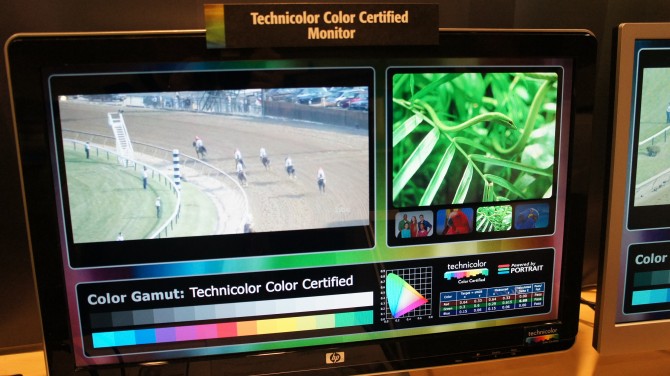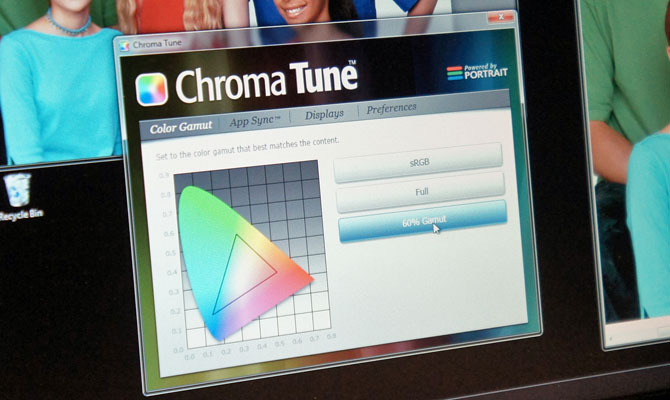New Technicolor Certification Guarantees More Colorful Notebooks, Monitors
Notebook-makers list a lot of specs when they market a new system. Staring at the box or the web page for a laptop, you can find out what processor it has, how much RAM, storage size and type, ports and a host of other important facts. Vendors rarely disclose any information about their display panels beyond size and resolution and, when they do, they talk mainly about brightness not color quality. A new certification from Technicolor and calibration software vendor Portrait Displays promises to turn the spotlight on color gamut and accuracy.
Starting this month, OEMs will be able to submit their notebook or PC screens to Portrait Displays' lab for testing. If the displays meet a strict set of criteria for color gamut and accuracy, the vendor will be able to use the Technicolor Color Certified logo on their packaging and marketing materials. Though the certification will bring obvious business benefits to both OEMs and to Technicolor / Portrait Displays, the program could do more than just help someone's bottom line. The goal, Portrait Displays COO Martin Fishman told us, is to push manufacturers into offering better quality displays on their products.
In Portrait Displays' booth at IDF 2012, Fishman showed us a demo with three different computer screens laid out next to each other with sample images on each. The right hand monitor had a mere 60 percent color gamut, which Fishman told us is common on notebooks, but rather flat. The center monitor was technicolor certified and colors seemed optimal while the left hand laptop screen was over saturated with oranges that looked like they were drawn with a neon highlighter. Fishman posited that OEMs do not have to spend much more to use higher-quality screens that can meet the Technicolor standards in their laptops.
However, as Fishman explained, even screens that far exceed Technicolor's standards need the right software to keep them from showing oversaturated images. That's why all Technicolor Certified PCs will come with an OEM-branded version of Portrait Display's Chroma Tune software.
The software automatically changes your screen's color space setting based on which application you have in the foreground. So, if you're watching a video in Windows Media Player, Chroma Tune will give you a wider gamut of colors than if you're viewing a web page in Google Chrome. For a photo editing program like Adobe Photoshop, the application might give you the widest gamut that your display supports.
Like Nvidia's control panel for its Optimus graphics switching software, Chroma Tune contains a list of all applications you have installed and a color profile setting for each. Though the software will have presets for a number of popular applications, users will have the option of changing these defaults or adding settings for new applications they install. They will even be able to create their own color profiles.
There's no word yet on which companies will be selling Technicolor Certified laptops and monitors or when we'll start seeing such products hit the market, but if Portrait Displays can get the major OEMs on board, users will finally have a color spec they can rely on when shopping for a new PC.
Sign up to receive The Snapshot, a free special dispatch from Laptop Mag, in your inbox.



